The Ultimate Fish Food Processing Machine Guide to 2024
Introduction to Fish Food Processing Machines
Fish food processing machines play a pivotal role in the efficient production of high-quality fish feed. These machines are designed to streamline the manufacturing process, ensuring consistency, precision, and hygiene standards are met. From mixing and grinding to extrusion and drying, fish food processing machines encompass a range of equipment tailored to the unique requirements of the aquaculture industry.
In recent years, the demand for fish food production lines has surged as the aquaculture sector experiences rapid growth to meet the escalating global demand for seafood. As such, understanding the fundamentals of fish food processing machines is essential for stakeholders in the industry to optimize production processes and ensure the delivery of nutritious and safe fish feed to the market.
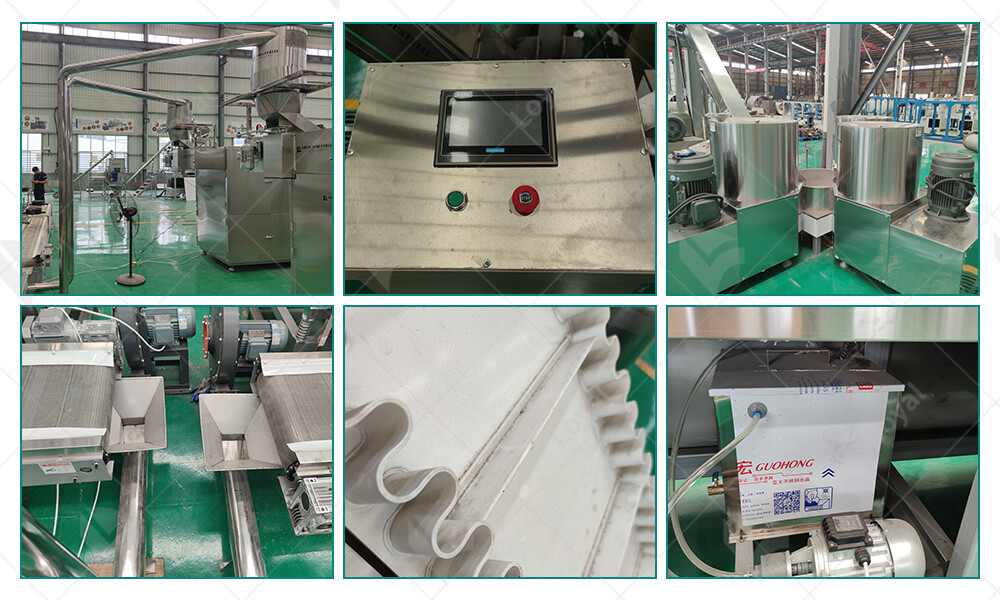
Evolution of Fish Food Processing Technology
The evolution of fish food processing technology has been marked by significant advancements driven by technological innovation and industry demand. Traditionally, fish feed production relied on manual labor and basic machinery, resulting in limited efficiency and scalability. However, with the advent of automation and modernization, fish food processing has undergone a transformative journey.
Early fish food processing machines primarily focused on basic functions such as grinding and mixing ingredients. However, as the industry matured and consumer expectations evolved, the technology behind these machines has advanced exponentially. Today, fish food processing machines are equipped with sophisticated features such as precise temperature control, automated feeding systems, and real-time monitoring capabilities, allowing for enhanced efficiency, consistency, and quality control throughout the production process.
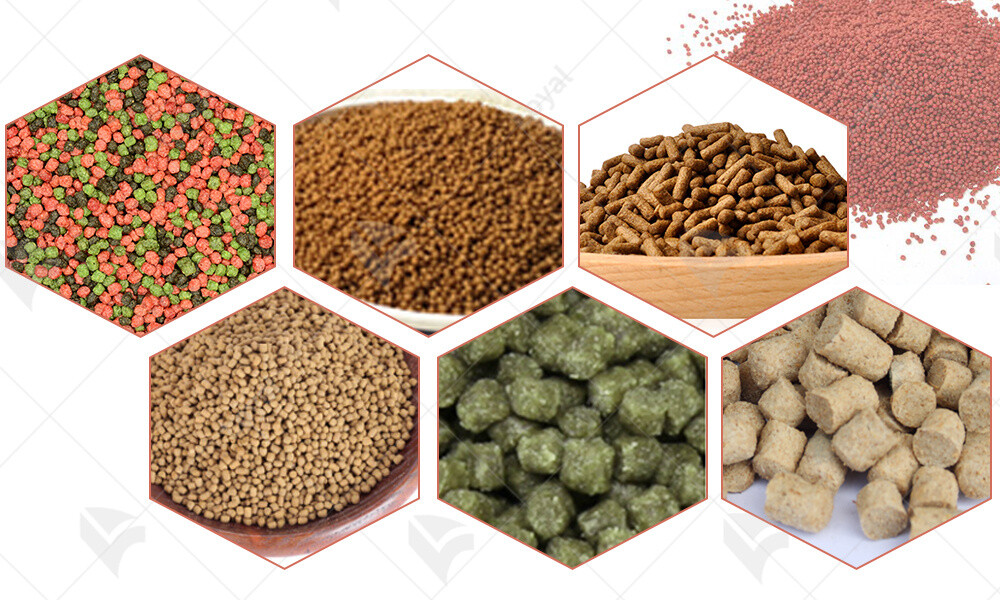
Key Components and Features of Fish Food Processing Machines
Fish food processing machines comprise several key components and features designed to facilitate various stages of the production process. One of the fundamental components is the extruder, which plays a central role in the extrusion process, transforming raw ingredients into uniform fish feed pellets. Extruders are equipped with precision controls to adjust parameters such as temperature, pressure, and moisture levels, ensuring optimal pellet formation and nutritional integrity.
Another essential component of fish food processing machines is the mixing system, responsible for blending raw ingredients to achieve the desired nutritional profile and texture. Modern mixing systems utilize advanced technology to ensure thorough and homogeneous mixing while minimizing product waste and energy consumption. Additionally, fish food processing machines often incorporate drying and cooling systems to remove excess moisture from the feed pellets, prolonging shelf life and maintaining product quality.
In addition to these core components, fish food processing machines may feature auxiliary equipment such as conveyor belts, sieves, and packaging systems to facilitate the transportation, screening, and packaging of the finished fish feed products. These integrated features contribute to the overall efficiency, reliability, and versatility of fish food processing machines, enabling manufacturers to meet the diverse needs of the aquaculture industry.
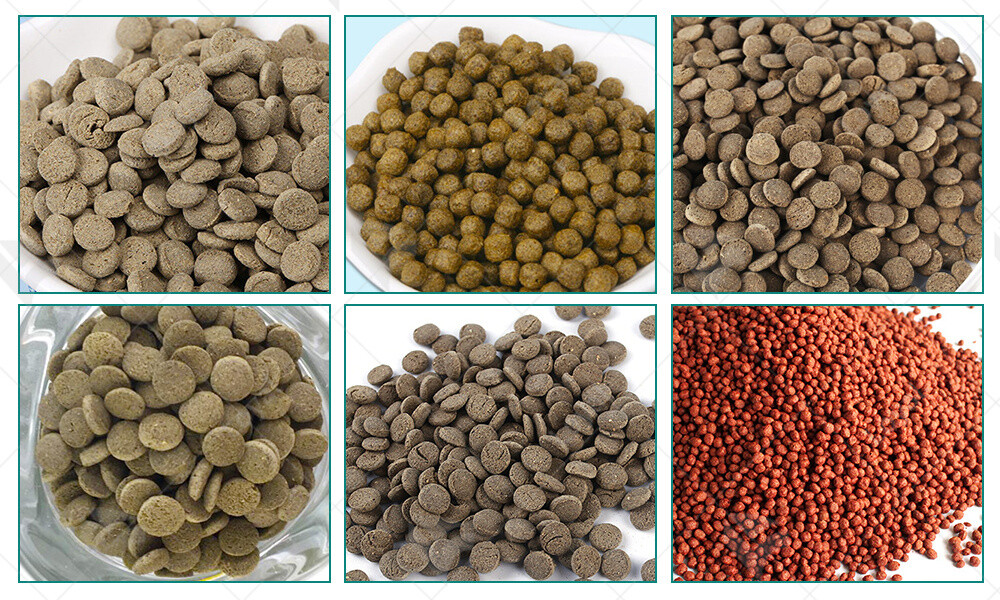
Manufacturer Comparison of Fish Food Processing Machines
When comparing fish food processing machines from LOYAL and AXOR, it's essential to assess various aspects to determine which suits specific production needs best. Below is a simplified comparison table outlining key features of both manufacturers' machines:
Aspect | LOYAL Fish Food Processing Machine | AXOR Fish Food Processing Machine |
Capacity | High | Moderate to High |
Automation Level | Semi-automatic to Automatic | Fully Automatic |
Customization Options | Limited | Extensive |
Quality Control Features | Basic | Advanced |
Maintenance Requirements | Moderate | Low |
Price | Affordable | High |
Customer Support | Responsive | Limited |
LOYAL fish food processing machines typically offer high capacity and semi-automatic to automatic operation. However, customization options may be limited compared to AXOR machines. While LOYAL machines have basic quality control features, they may require more maintenance compared to AXOR machines. In terms of price, LOYAL machines are more affordable, with responsive customer support.
AXOR fish food processing machines, on the other hand, boast moderate to high capacity and fully automatic operation. They provide extensive customization options and advanced quality control features, requiring lower maintenance efforts. However, AXOR machines come with a higher price tag and may have limited customer support availability.
Ultimately, the choice between LOYAL and AXOR fish food processing machines depends on factors such as production volume, budget, customization needs, and the level of automation preferred by the manufacturer.
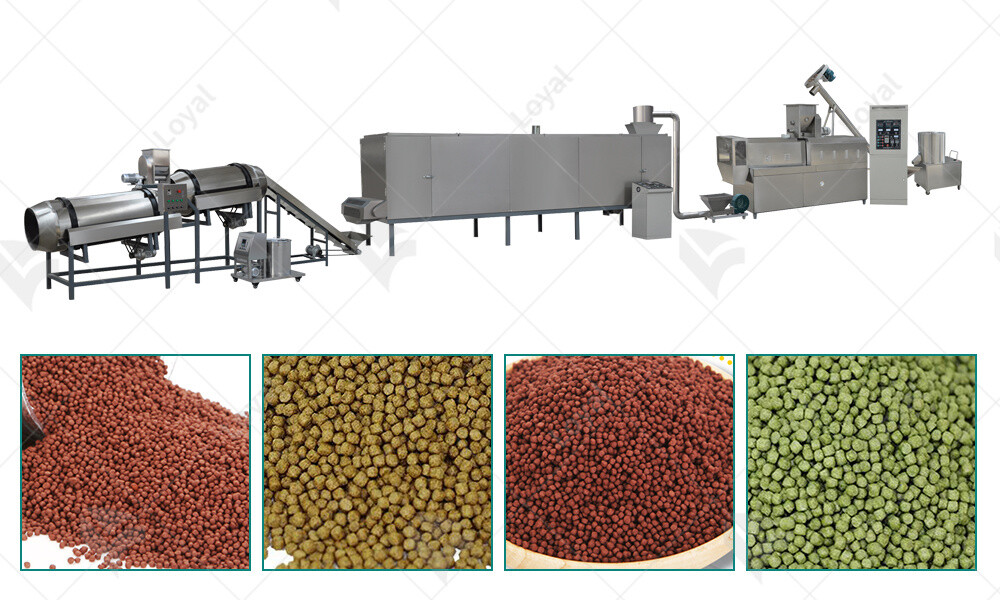
Advancements in Automation and Robotics in Fish Food Processing
Advancements in automation and robotics have revolutionized the fish food processing industry, enhancing efficiency, precision, and safety in various stages of production.
Firstly, automation has enabled seamless operation and reduced manual labor dependency in tasks such as sorting, grading, and packaging. Fish food processing lines now incorporate conveyor systems, robotic arms, and sensors to streamline workflows and minimize human error. Robotics have significantly improved consistency and accuracy in tasks that demand intricate movements, such as filleting and portioning. Advanced robotic systems equipped with computer vision technology can precisely identify fish anatomy and execute precise cuts with minimal waste.
Furthermore, the integration of artificial intelligence (AI) algorithms allows fish food processing machines to adapt to changing production requirements and optimize performance over time. AI-powered systems can analyze data from various sensors to detect anomalies, predict equipment maintenance needs, and optimize production parameters for maximum efficiency. Collaborative robots, or cobots, have emerged as valuable assets in fish food processing facilities, working alongside human operators to perform tasks that require dexterity and flexibility while ensuring safety in shared workspaces.
Advancements in automation and robotics have not only increased productivity but also raised the standard of quality and safety in fish food processing, positioning the industry for continued growth and innovation in the years to come.

Quality Control Measures in Fish Food Processing Machinery
Firstly, stringent inspections are conducted on raw materials entering the production line. This includes thorough checks for freshness, purity, and any potential contaminants. Advanced sensor technologies are often employed to detect any anomalies in the raw materials, allowing for immediate removal or correction.
Secondly, precise calibration and maintenance of processing equipment are essential. Regular calibration ensures accurate measurement and consistency in processing parameters, such as temperature, pressure, and speed. Scheduled maintenance routines help prevent equipment malfunctions and downtime, minimizing the risk of product defects.
These systems continuously monitor various process parameters in real-time, providing instant alerts in case of deviations from preset standards. This proactive approach enables prompt corrective actions to be taken, preventing the production of non-compliant products.
Lastly, comprehensive documentation and traceability systems are implemented to track every stage of the production process. This includes recording data on raw materials, processing conditions, and product quality tests. In the event of a quality issue or product recall, these records facilitate swift investigation and targeted corrective actions, minimizing the impact on consumers and brand reputation.
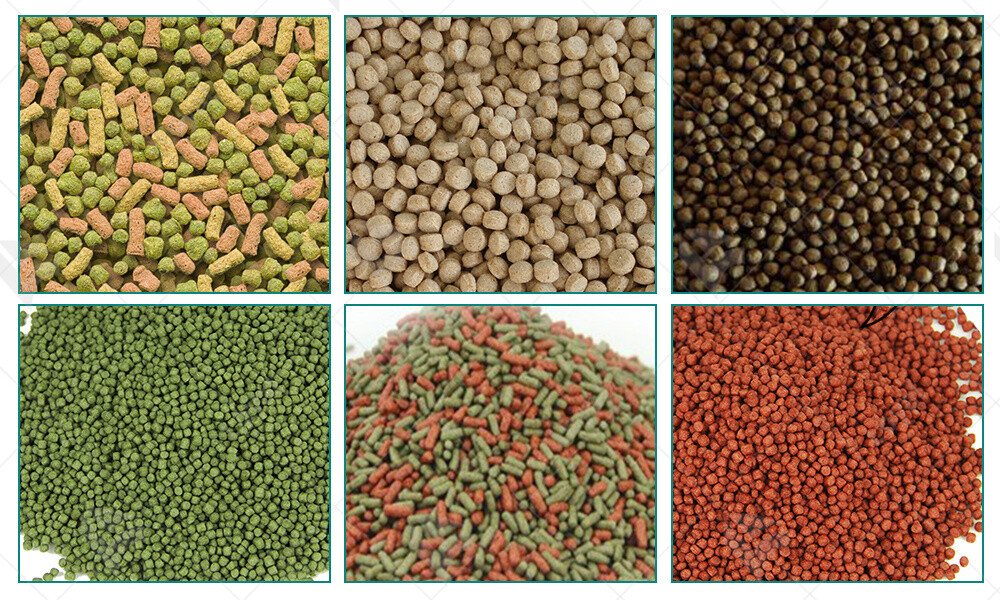
Sustainability Practices in Fish Food Processing Equipment
One key focus area is energy efficiency. Manufacturers are developing and implementing innovative technologies to minimize energy consumption in processing equipment. This includes the use of energy-efficient motors, advanced insulation materials, and optimized process designs to reduce overall energy usage and operating costs.
Additionally, there is a growing emphasis on the use of renewable energy sources to power processing equipment. Solar, wind, and hydropower systems are being integrated into processing facilities to reduce reliance on fossil fuels and decrease carbon emissions. These renewable energy solutions not only contribute to sustainability but also offer long-term cost savings and energy independence.
Another important aspect of sustainability in fish food processing equipment is waste reduction and resource recovery. Manufacturers are implementing closed-loop systems and recycling technologies to minimize waste generation and maximize resource utilization. By reusing water, recovering valuable by-products, and recycling packaging materials, processing facilities can significantly reduce their environmental footprint while improving operational efficiency.
Sustainable materials and manufacturing practices are gaining traction in the industry. Equipment manufacturers are exploring alternatives to traditional materials, such as biodegradable plastics and sustainable composites, to reduce environmental impact and promote circular economy principles. Additionally, eco-friendly manufacturing processes, such as lean production and green supply chain management, are being adopted to minimize waste and optimize resource utilization throughout the equipment lifecycle.
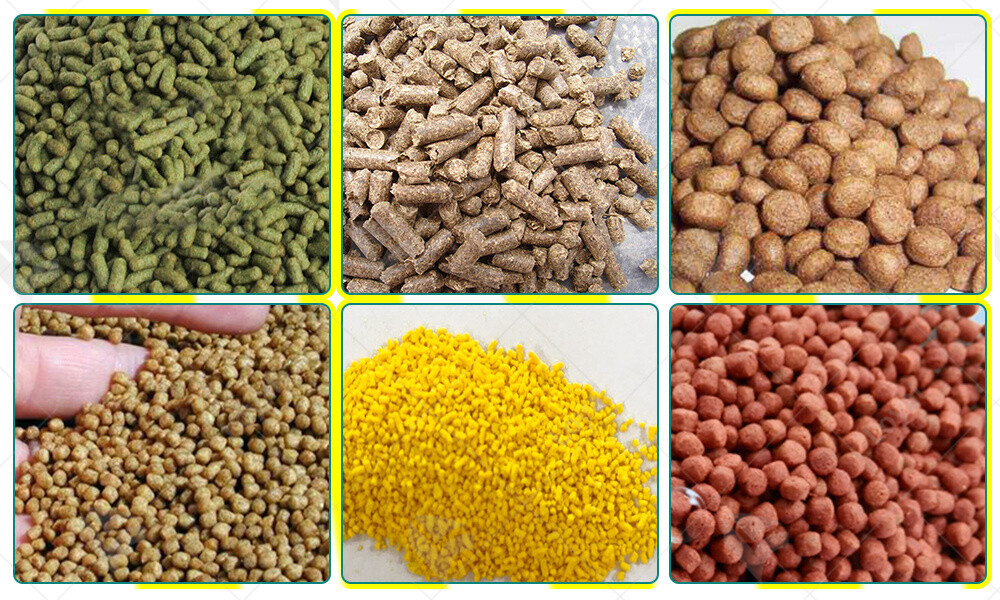
Integration of IoT and Data Analytics in Fish Food Processing Machines
Integration of IoT (Internet of Things) and data analytics in fish food processing machines has revolutionized the industry, enhancing efficiency, productivity, and quality control.
IoT-enabled sensors installed in various components of fish food processing machines gather real-time data on temperature, moisture levels, pH, and other crucial parameters throughout the production line. This data is then transmitted to a centralized system where it is analyzed using advanced data analytics algorithms.
By leveraging IoT and data analytics, fish food manufacturers can achieve precise monitoring and control over the entire production process. Any deviations from optimal conditions can be detected promptly, allowing for immediate corrective actions to be taken, thus minimizing the risk of product defects or wastage.
Data analytics enable predictive maintenance of fish food processing machinery. By analyzing historical data and patterns, potential equipment failures or maintenance needs can be predicted in advance, preventing costly downtime and optimizing production schedules.The integration of IoT and data analytics in fish food processing machines facilitates proactive decision-making, enhances operational efficiency, and ensures the delivery of high-quality products to consumers.
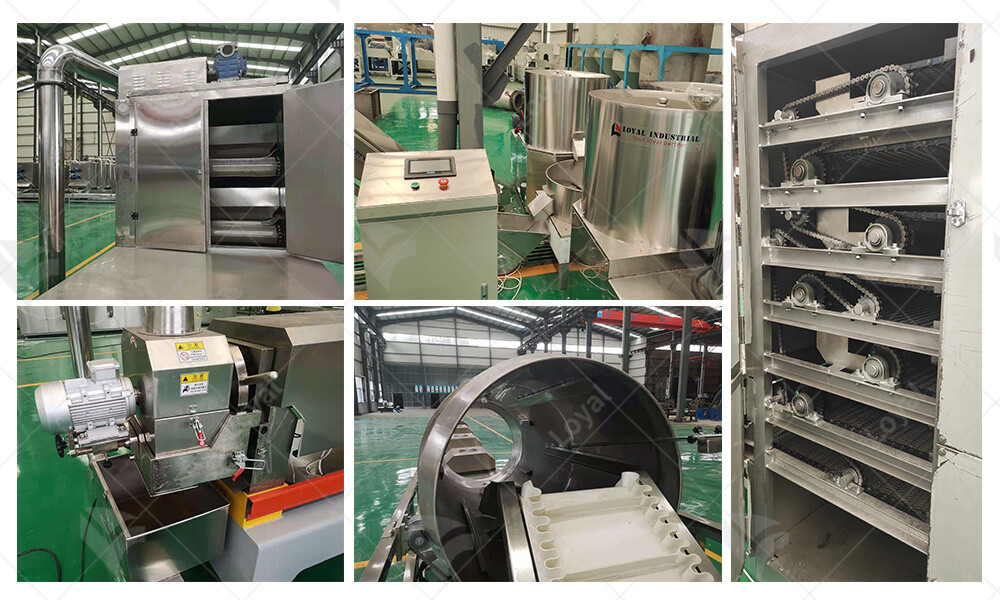
Emerging Trends and Innovations in Fish Food Processing Technology
The fish food processing industry is witnessing rapid advancements and innovations driven by technological developments and evolving consumer preferences.One emerging trend is the adoption of sustainable processing technologies. With increasing awareness of environmental conservation, fish food manufacturers are investing in eco-friendly processing methods that minimize waste generation, energy consumption, and environmental impact.
Another significant trend is the integration of automation and robotics in fish food processing lines. Automated systems streamline production processes, improve efficiency, and reduce labor costs. Robotics are being utilized for tasks such as sorting, packaging, and quality inspection, enabling higher throughput and consistent product quality.There is a growing emphasis on the development of novel processing techniques to enhance nutritional value and sensory attributes of fish-based products. Techniques such as high-pressure processing, cold plasma treatment, and enzymatic modification are being explored to retain freshness, flavor, and nutritional integrity of fish food products.
There is increasing interest in personalized nutrition and customization in fish food processing. Manufacturers are exploring technologies that allow for the formulation of tailored fish food products to meet specific dietary requirements and preferences of consumers.These emerging trends and innovations are shaping the future of fish food processing technology, driving industry growth and catering to evolving consumer demands.

Future Outlook: Potential Developments in Fish Food Processing Machinery
The future of fish food processing machinery holds promising developments aimed at further enhancing efficiency, sustainability, and product quality.One potential development is the integration of artificial intelligence (AI) and machine learning algorithms into fish food processing machines. AI-powered systems can analyze vast amounts of data to optimize processing parameters, predict consumer trends, and even suggest product innovations.
There is a growing focus on modular and flexible processing equipment that can adapt to changing production needs and accommodate a wide range of fish species and product variations. Modular systems allow for easier scalability and customization, enabling manufacturers to quickly respond to market demands.In terms of sustainability, there is ongoing research into alternative energy sources and green processing technologies for fish food production. Renewable energy solutions such as solar and wind power are being explored to reduce reliance on fossil fuels and minimize carbon emissions.
Advancements in 3D printing technology hold promise for the fabrication of customized components and spare parts for fish food processing machinery, reducing lead times and improving maintenance efficiency.The future of fish food processing machinery is characterized by innovation, sustainability, and adaptability, driven by technological advancements and evolving market dynamics.
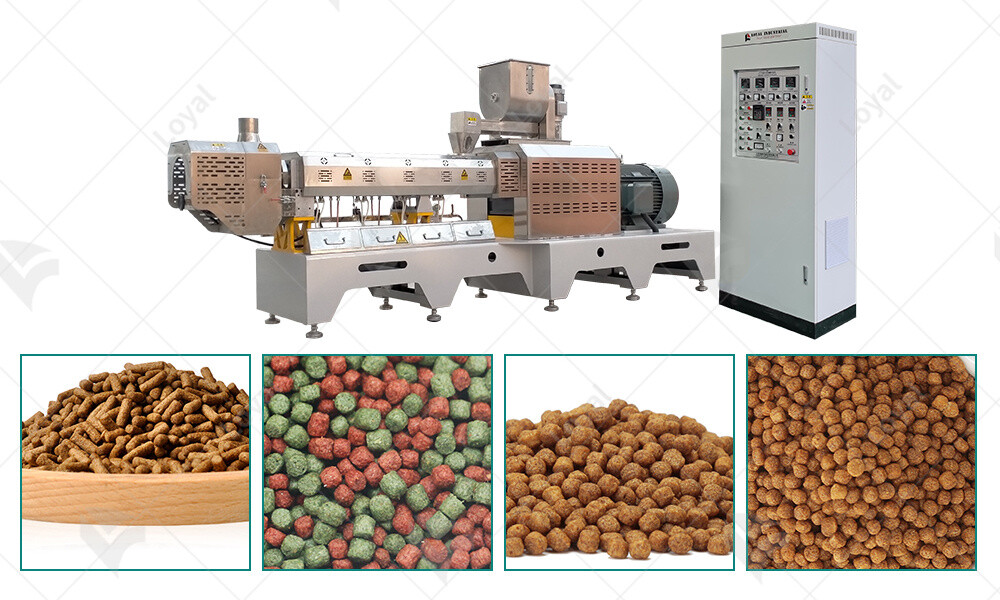
FAQs: Frequently Asked Questions about Fish Food Production Line
1. What is a fish food production line?
A fish food production line is a series of interconnected machinery and equipment designed for the automated processing of fish-based products. It encompasses various stages such as raw material handling, mixing, extrusion, drying, and packaging, ultimately producing a range of fish feeds or treats.
2. What types of fish food can be produced using a fish food production line?
A fish food production line can manufacture a wide variety of products, including fish feed pellets, flakes, granules, and treats. These products can be formulated for different fish species, life stages, and nutritional requirements.
3. What are the key components of a fish food production line?
Key components of a fish food production line include raw material handling systems, mixers, extruders, dryers, coating machines, cooling systems, and packaging equipment. Each component plays a vital role in the efficient and consistent production of high-quality fish food products.
4. How does a fish food production line ensure product quality and safety?
Fish food production lines incorporate various quality control measures and safety features to ensure the integrity of the final products. These include precise process monitoring, sanitation protocols, metal detection systems, and compliance with food safety regulations and standards.
5. What are the benefits of using a fish food production line?
Using a fish food production line offers numerous benefits, including increased production efficiency, consistent product quality, reduced labor costs, improved food safety, and scalability to meet growing demand. Additionally, automated processing minimizes human error and ensures uniformity in product characteristics.
6. Can a fish food production line be customized to specific requirements?
Yes, fish food production lines can be customized to meet specific requirements such as product formulations, processing capacities, and packaging formats. Manufacturers often offer modular designs and flexible configurations to accommodate diverse needs and preferences.
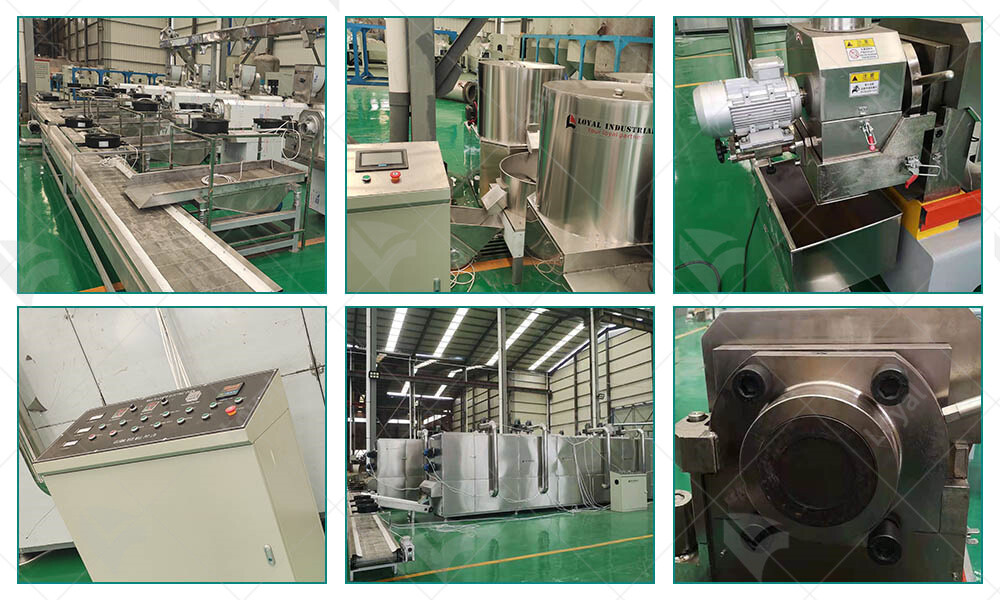
References
1. Petfoodindustry.com: https://www.petfoodindustry.com/
2. Petfoodprocessing.net: https://www.petfoodprocessing.net/
3. Foodengineeringmag.com: https://www.foodengineeringmag.com/
4. Foodprocessing.com: https://www.foodprocessing.com/
5. Foodtechconnect.com: https://foodtechconnect.com/












